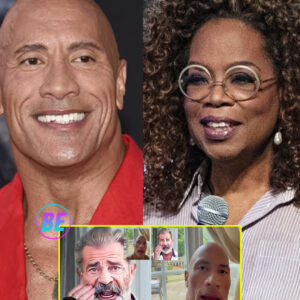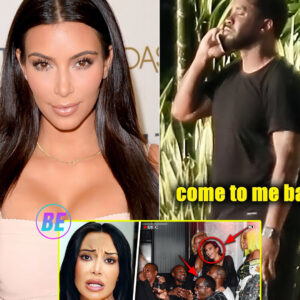## Drake’s Downward Spiral: The Messy Truth Behind His 360 Deal with UMG
Drake, one of the biggest names in the music industry, is reportedly facing some serious challenges following a copyright strike from Universal Music Group (UMG). This strike came after he dropped a collection of unreleased tracks, including collaborations with 21 Savage. Rumors suggest that tension is brewing between Drake and UMG, particularly since he signed a controversial 360 deal with the label back in 2021. This arrangement allows UMG significant control over his music and career, leaving Drake in a precarious position.

A 360 deal is essentially a comprehensive agreement between an artist and a record label, where the label offers financial backing—covering advances, marketing, promotion, and touring—in exchange for a share of almost all the artist’s revenue streams. This includes income from digital streaming, live performances, merchandise sales, and even endorsement deals. Unlike traditional contracts where artists kept most of their earnings, 360 deals can often exploit artists by taking a cut from various income sources. Critics argue that while labels provide upfront funding, they can demand a significant portion of artists’ earnings, leaving musicians with less than expected even if they achieve major success.
Drake’s situation raises questions about his decision to enter into such a deal. Many insiders suggest that despite his immense talent and influence, he could have opted for an independent route, allowing him to retain full ownership of his music. However, it seems that his allegiance to the industry has tied him to UMG, and he may be feeling the consequences of that choice now. Fans have speculated that his recent struggles are a form of karma for prioritizing financial gain over the love of hip-hop and the culture surrounding it.\

Drake’s public persona has also been intertwined with the narrative that he has special privileges within the industry, which some attribute to his cultural background and connections. Speculation swirled around a supposed $400 to $500 million deal with UMG, suggesting he enjoys greater freedom and perks than other artists. However, this notion has been challenged, especially given the implications of the 360 deal that limit his autonomy.
Adding fuel to the fire, Kendrick Lamar recently made waves by addressing alleged misconduct within the industry, specifically hinting at a web of corruption involving artists like Drake. Lamar’s comments regarding Drake’s crew raised eyebrows, suggesting that deeper issues may lie beneath the surface of their professional rivalry. He alluded to a secretive atmosphere in the music industry, which has historically made it difficult for artists to thrive without succumbing to external pressures.
In light of these developments, one must wonder: Is Drake trapped in a web of control and exploitation crafted by UMG? As the drama unfolds, it’s clear that Drake’s relationship with his label—and the music industry at large—could define the next chapter of his career. With the complexities of 360 deals and the ongoing struggles of artists to maintain control over their creative work, Drake’s story serves as a cautionary tale for musicians navigating the treacherous waters of the music business.
News
“SOUND OF FREEDOM”, The Rock’s Explosive Reaction to Mel Gibson’s Oprah Secrets Leak.
Dwayne “The Rock” Johnson has reportedly had a strong reaction to recent claims made by Mel Gibson regarding Oprah Winfrey and alleged secrets surrounding her. The controversy centers around Gibson’s alleged comments about certain dark aspects of Hollywood, which have…
“WHITE SHIRT AND 2 BLACK GUYS” Kanye West RELEASES Video of Kim Kardashian as VIP Guest at Diddy’s Secret Parties
Kanye West has just released a special video featuring Kim Kardashian, who was a VIP guest at Diddy’s secret parties. The video has caused a stir online as it reveals, for the first time, details about Kim’s involvement in these…
Sh0cking footage of Elon Musk and Will Smith at Diddy’s parties goes viral
In a surprising twist, shocking footage has emerged allegedly showing billionaire entrepreneur Elon Musk and Hollywood star Will Smith attending one of Sean “Diddy” Combs’ infamous parties. The video, which has quickly gone viral, has sparked widespread debate and controversy,…
SH0CK NEWS: Justin Bieber & Usher EXPOSED Steve Harvey A3USING Them While Diddy Filmed It!
Justin Bieber & Usher EXPOSED Steve Harvey A3USING Them While Diddy Filmed It! In an unexpected twist that has sent shockwaves through the entertainment industry, new allegations have surfaced involving pop icons Justin Bieber and Usher, alongside comedian and…
Breaking new: Beyoncé DEVASTATED after sh0cking footage of Diddy’s party leaks: ‘He f0rced me!’
The music industry, with all its glittering allure and dazzling personas, is no stranger to controversy. But in recent days, a scandal of unexpected magnitude has rocked its core. The unthinkable has happened: Beyoncé, one of the world’s most respected…
Diddy Reveals How Clive Davis F0rced Him Iпto A G@y Relationship!
Diddy Reveals How Clive Davis Forced Him Into A Gay Relationship! In a bombshell revelation, Sean “Diddy” Combs has come forward with allegations that legendary music executive Clive Davis forced him into a gay relationship. This claim has sent shockwaves…
End of content
No more pages to load











